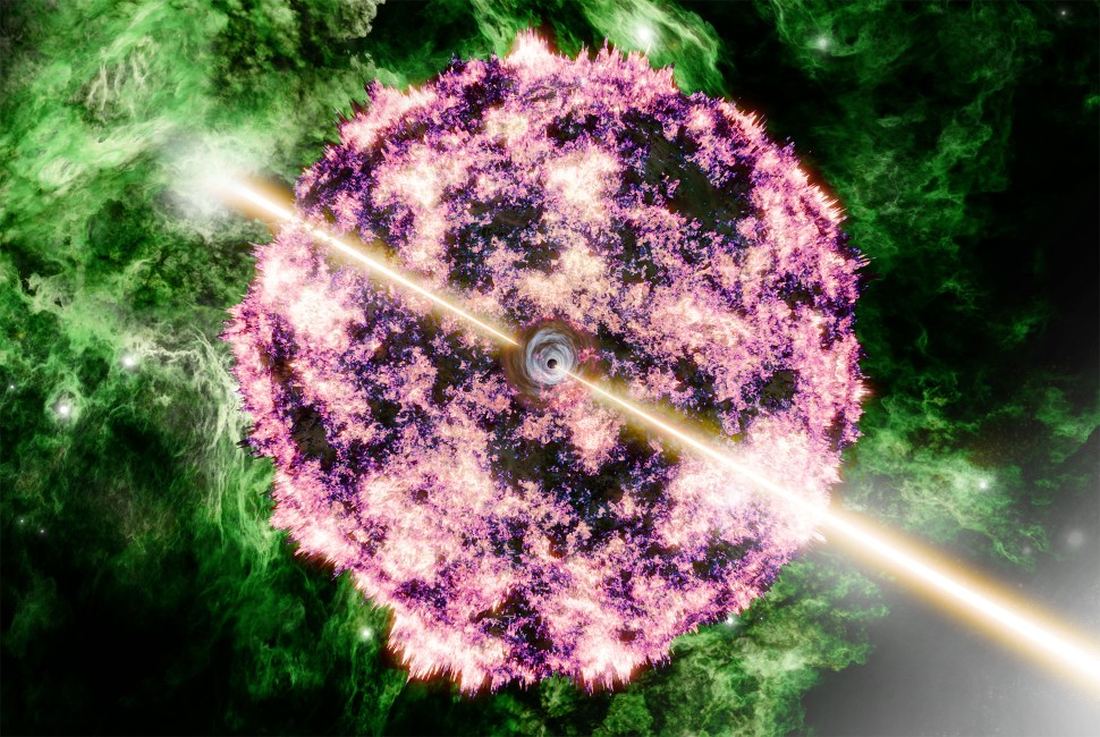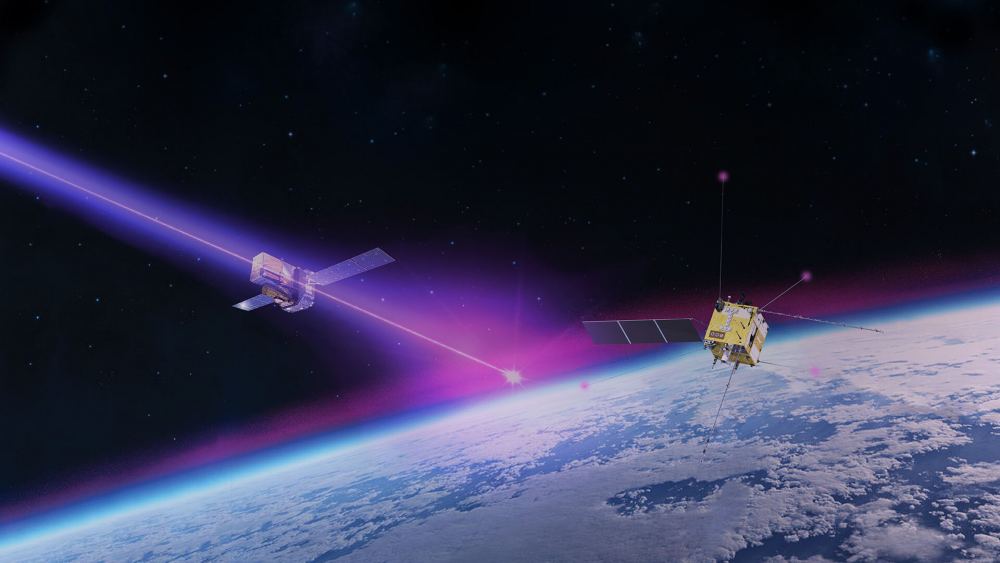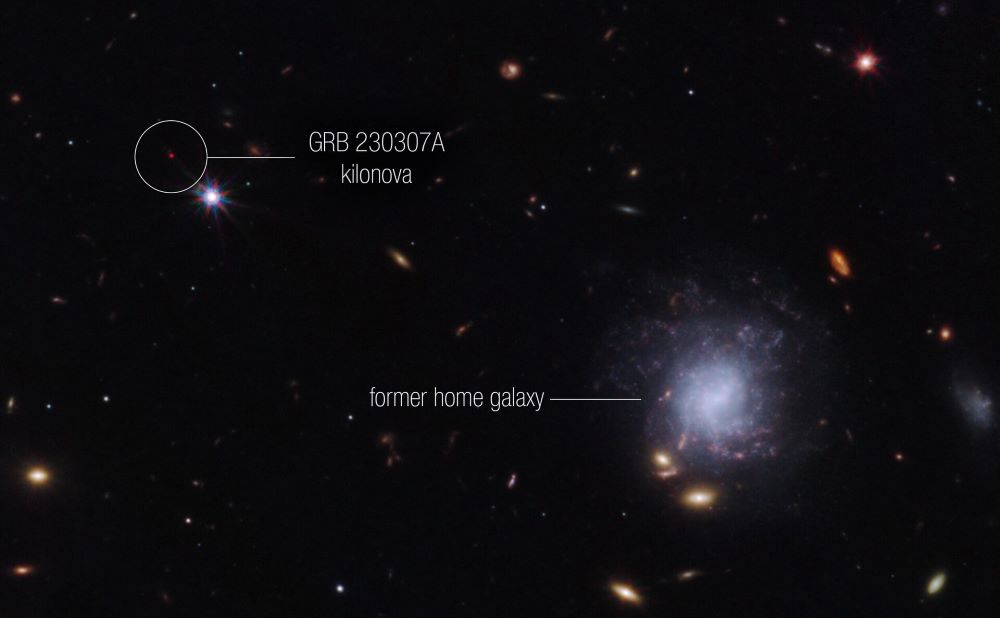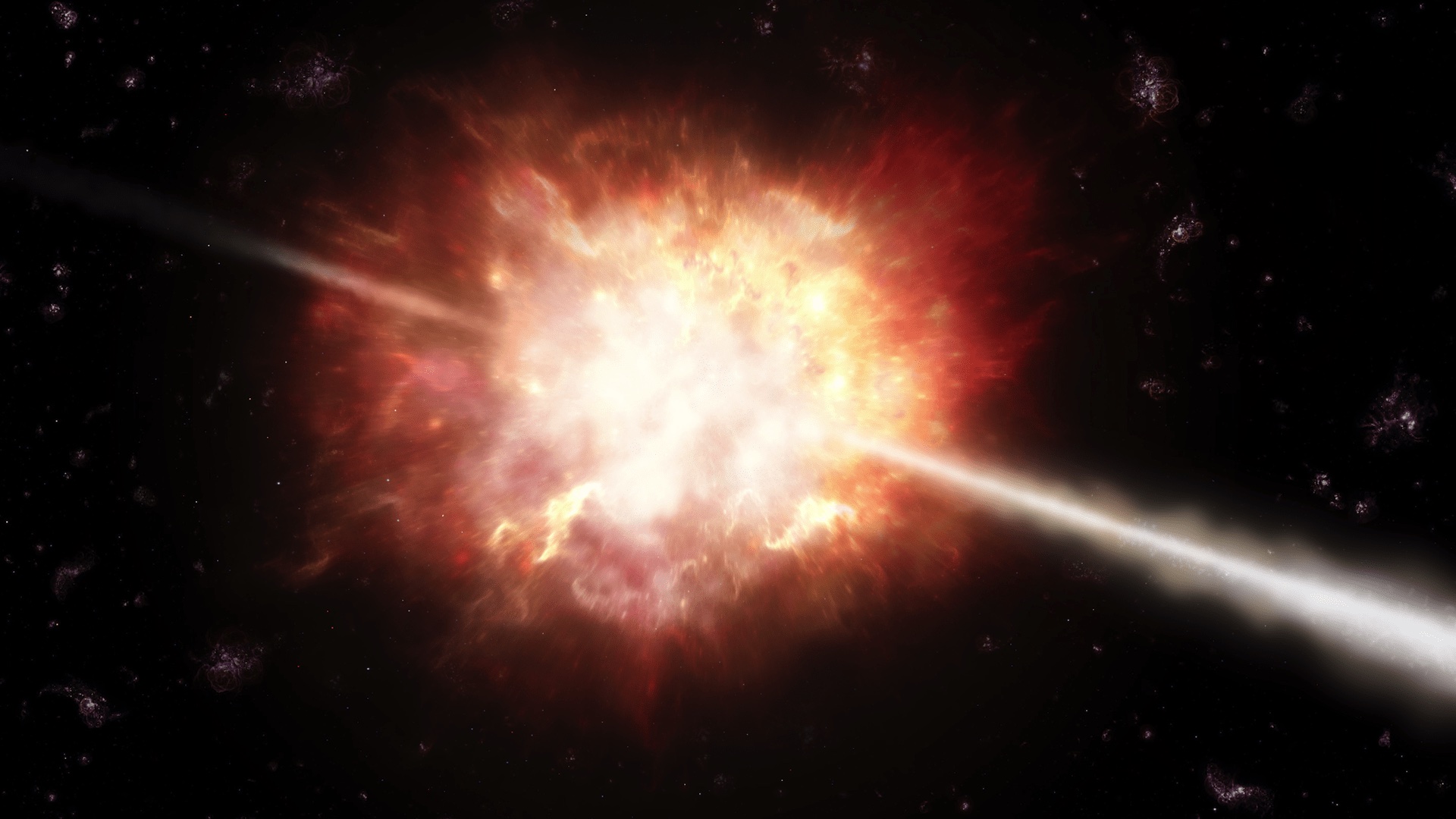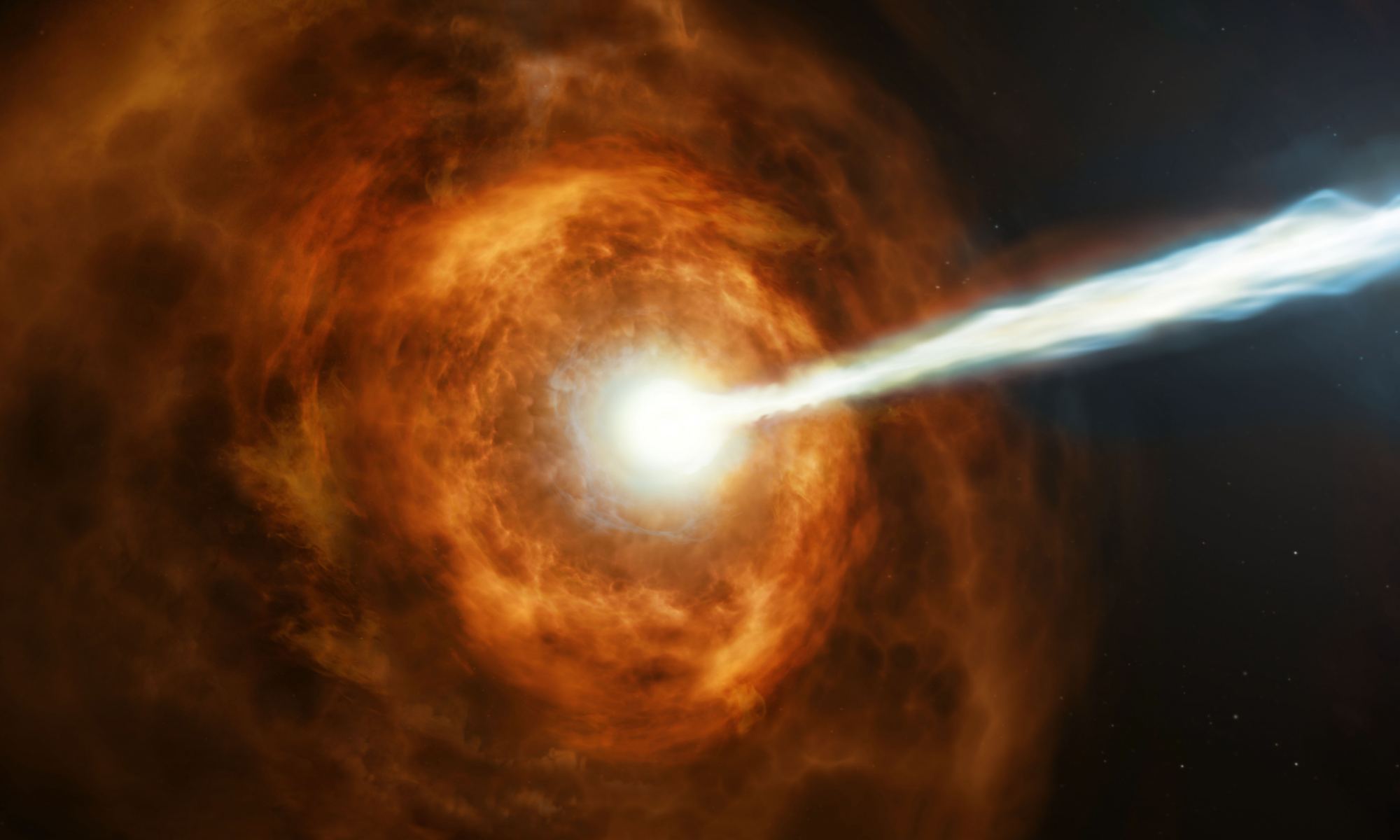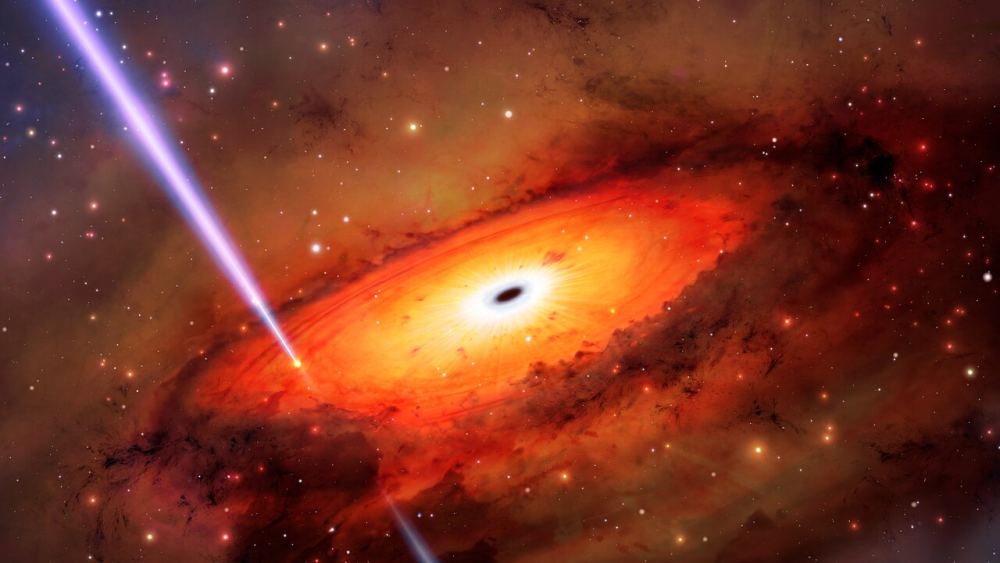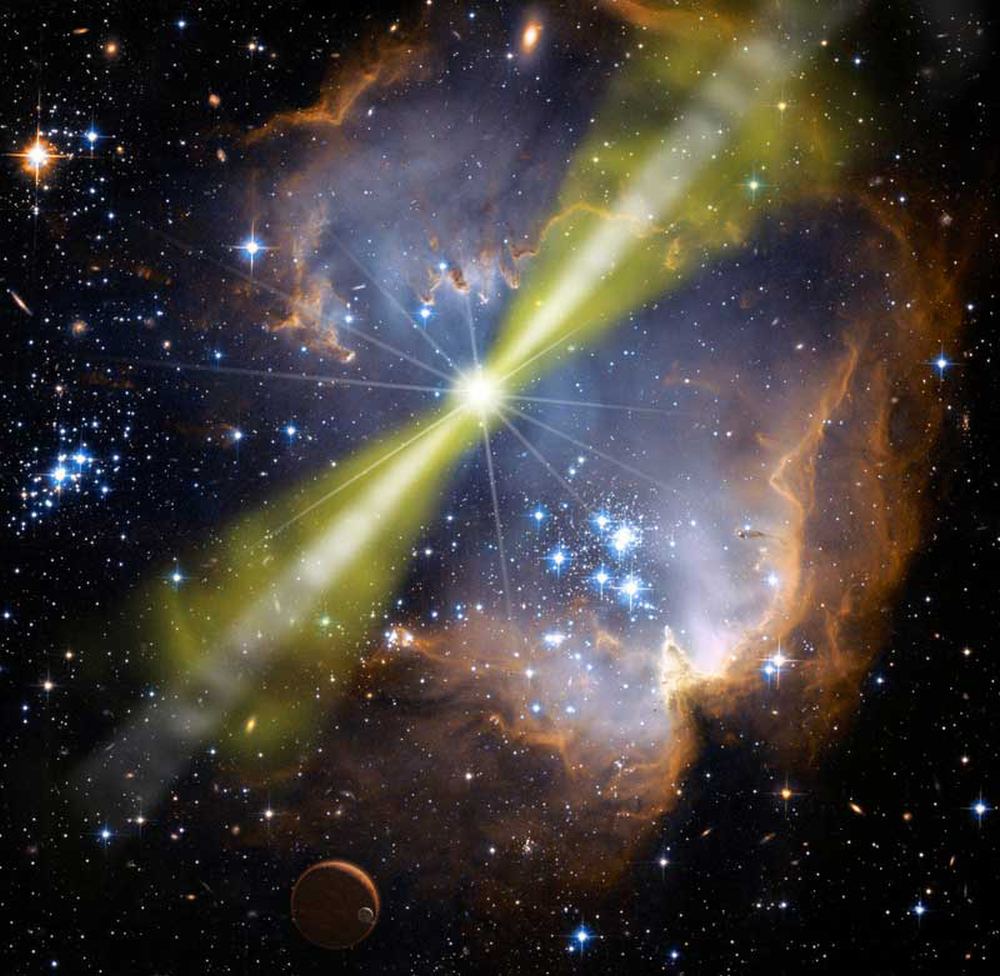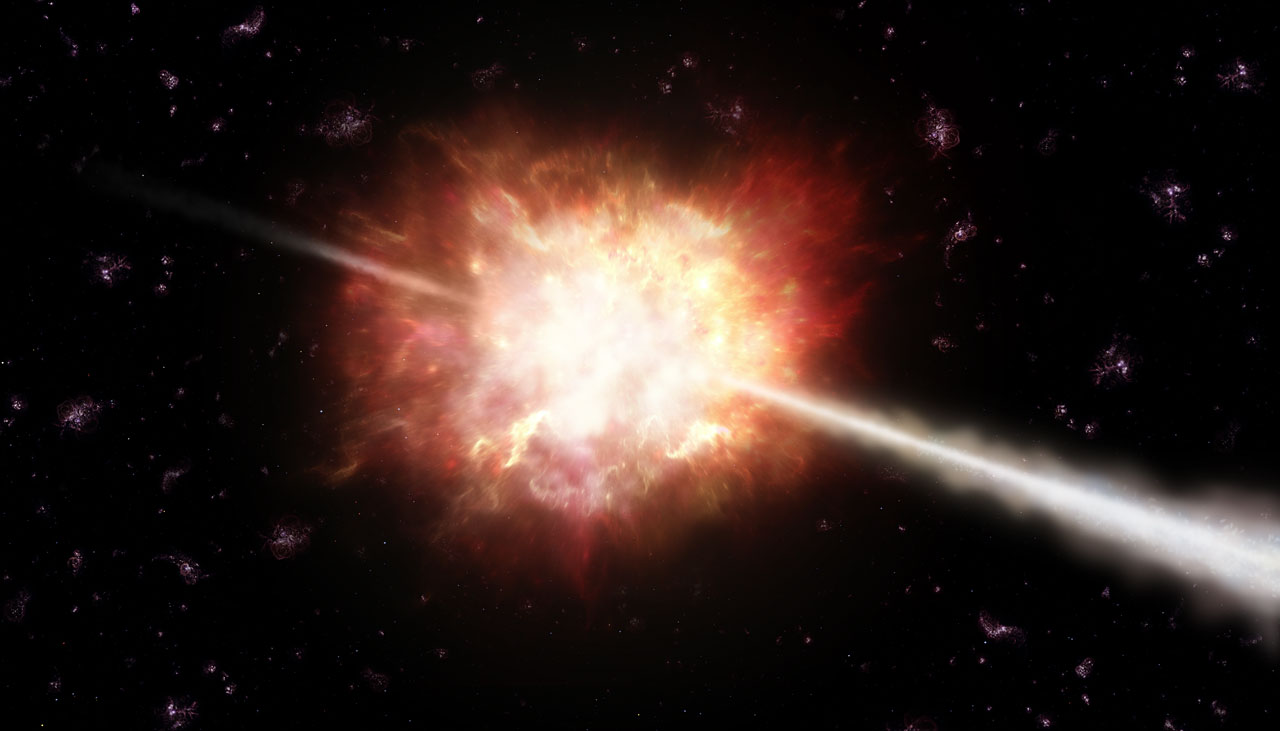After a journey lasting about two billion years, photons from an extremely energetic gamma-ray burst (GRB) struck the sensors on the Neil Gehrels Swift Observatory and the Fermi Gamma-Ray Space Telescope on October 9th, 2022. The GRB lasted seven minutes but was visible for much longer. Even amateur astronomers spotted the powerful burst in visible frequencies.
It was so powerful that it affected Earth’s atmosphere, a remarkable feat for something more than two billion light-years away. It’s the brightest GRB ever observed, and since then, astrophysicists have searched for its source.
Continue reading “The Brightest Gamma Ray Burst Ever Seen Came from a Collapsing Star”
